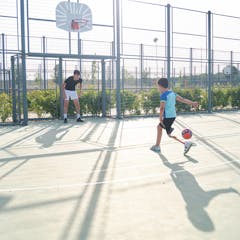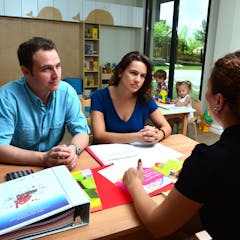
Articles on Inclusive education
Displaying 1 - 20 of 51 articles

The government must call together a task force of educators, families and researchers to work toward better solutions for inclusive education as education for all.

Governmental co-operation is needed to accompany refugees through Canadian systems: from arrival, through education paths and into employment.

Students with disability are experts in themselves and their needs. But we found they are often not consulted by their teachers about what helps them at school.

Professional learning communities are a space for teachers to discuss their teaching methods and their immediate realities.

In new research, we spoke to parents who have children at special schools. They told us they value the individual support and smaller classrooms.

This is an opportunity for Deaf people to finally be properly educated in a language they understand.

Guided by policy, practice and relationships with students, families and communities, teachers are charged with helping all students thrive. To suggest otherwise is disturbing.

Ubuntu is a concept that emphasises the importance of including everyone and building a strong community.

As a researcher focussed on African, Afro-Caribbean and Black families’ schooling experiences, I appeal to school staff to understand the importance of the school-family-community partnership.

Listening for events like black hole collisions is important in astronomy research – and the technology is only getting better.

Universities can support mature students by addressing stigma and ageism, creating a sense of community and adapting programs to suit their multiple roles.

Almost 90% of students with disability go to mainstream schools but an increasing number are going to special schools.

Those who oppose inclusive teaching content often claim to be representing parents’ views. The evidence from a large national survey of parents shows those claims are very wrong.

To achieve quality and inclusive education, Tanzania should prioritise disadvantaged and marginalised children in schools.

Inclusive education has been promoted since the 1970s. But research shows children with disabilities are still excluded from school activities and sports in particular

Individual education plans (IEPs) should be created by a team of professionals in collaboration with parents. If a child’s IEP is inaccurate, their learning needs won’t be met.

Schools and universities are embracing and promoting the use and teaching of South African Sign Language but more still needs to be done.

For a learner to be the best and to win awards, their peers must lose. This expense is far too great to ignore in a country fraught with inequalities.

South Africa’s inclusive education policy currently under review must address the hindrances preventing children with disabilities from effectively access education in mainstream schools.

Two scholars of inclusive education explain how segregated Black schools advocated for Black children in a way that’s often missing from today’s desegregated classrooms.
